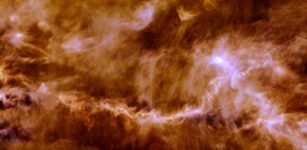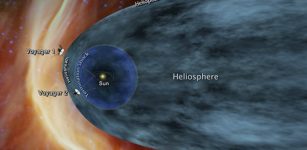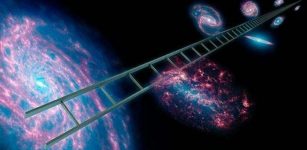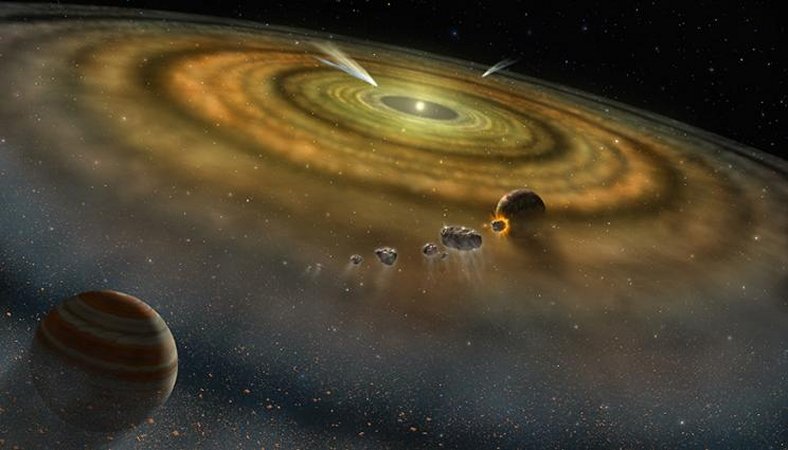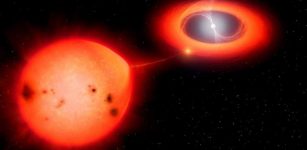Merger Of Two Neutron Stars Forms A Magnetar 6.5 Billion Light Years Away
Eddie Gonzales Jr. – MessageToEagle.com – Astronomers identified an outburst of X-ray emission from a galaxy approximately 6.5 billion light years away, which is consistent with the merger of two neutron stars to form a magnetar.
Magnetar represents a a type of neutron star believed to have an extremely powerful magnetic field. Like other neutron stars, magnetars are around 20 kilometers (12 mi) in diameter and have a mass 2–3 times that of the Sun.
The team (with astronomers from with colleagues in China, Chile and the Netherlands, and at Pennsylvania State University and the University of Nevada) analyzed data from the Chandra X-ray Observatory and calculated that mergers like this happen roughly 20 times per year in each region of a billion light years cubed.
“Neutron stars are mysterious because the matter in them is so extremely dense and unlike anything reproduceable in a laboratory,” Bret Lehmer, assistant professor of physics at the University of Arkansas said in a press release.
“We do not yet have a good understanding of the physical state of the matter in neutron stars. Mergers involving neutron stars produce lots of unique data that gives us clues about the nature of neutron stars themselves and what happens when they collide.”
Once, in 2002, astronomers observed a magnetar. It suddenly began bursting with over 80 bursts recorded within a 4-hour window. Since then, Magnetar 1E 2259 hasn’t disturbed the depths of space.
A neutron star is a small, very dense star, averaging around 12 miles in diameter. Neutron stars are formed by the collapse of a star massive enough to produce a supernova, but not massive enough to become a black hole. When two neutron stars merge to become a magnetar, the resulting magnetic field is 10 trillion times stronger than a kitchen magnet.
“A key piece of evidence is how the signal changed over time,” said Lehmer. “It had a bright phase that plateaued and then dropped off in a very specific way. That is exactly what you’d expect from a magnetar that is rapidly losing its magnetic field through radiation.”
Written by Eddie Gonzales Jr. – MessageToEagle.com Staff Writer

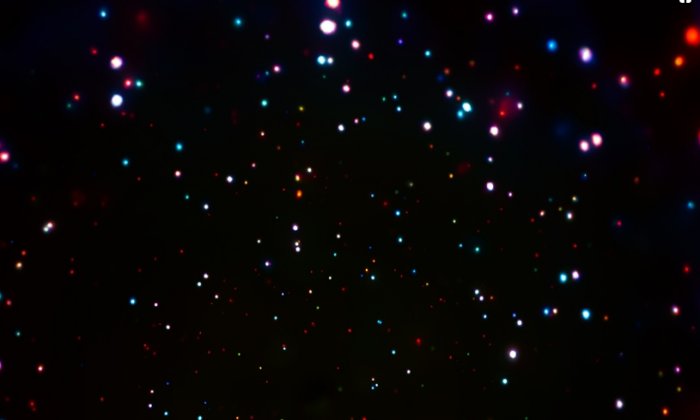
![Composite X-ray and radio image of Hoinga (see also Fig.2 and Fig.3). The X-rays discovered by eROSITA are emitted by… [more] © eROSITA/MPE (X-ray), CHIPASS / SPASS / N. Hurley-Walker, ICRAR-Curtin (Radio)](https://www.messagetoeagle.com/wp-content/uploads/2021/03/hoingaremnants12-307x150.jpg)
